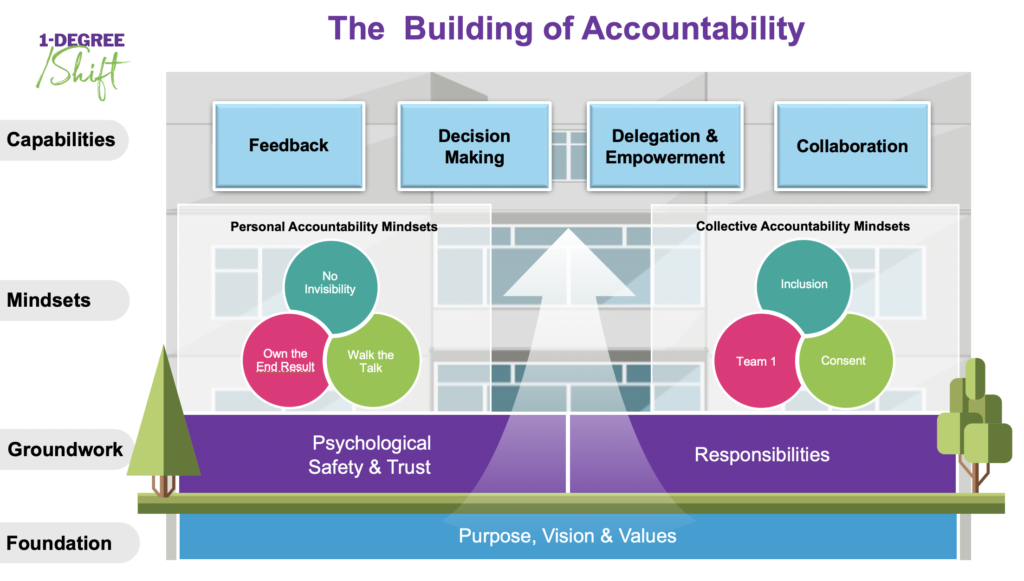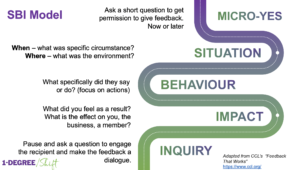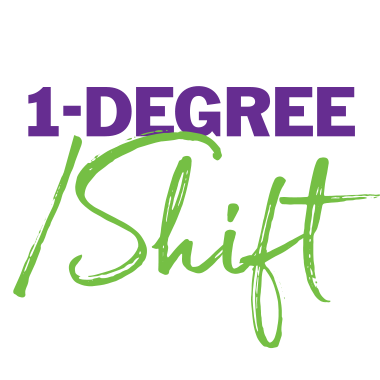87% of employees desire opportunities for development in their jobs, yet only about one-third report receiving the feedback necessary to engage and improve.
Ah, feedback – the not-so-secret sauce to unlocking greatness! In the quest to build a robust framework for accountability, feedback is a necessary ingredient that can transform our capabilities. Without feedback, we (or people) are just guessing how we are doing. Regular feedback ensures that individuals and teams remain accountable for their actions and performance. It helps clarify expectations, measure progress, and reinforce the importance of responsibility, leading to a more accountable and reliable team.
As executives and leaders, one of the most impactful ways we can foster a feedback culture is by going first—actively seeking and requesting feedback. By giving and inviting feedback, we demonstrate our commitment to growth and set a powerful example for others to follow. This openness not only shows that we value others’ perspectives but also encourages a more open and reciprocal exchange within the team.
Research shows that 87% of employees desire opportunities for development in their jobs, yet only about one-third report receiving the feedback necessary to engage and improve. So, how do we ensure our feedback is constructive, supportive, and drives positive change?
The Building of Accountability
We have created a model called The Building of Accountability to help visualize the key elements of a work culture with a strong sense of accountability. This integrated approach ensures that all elements work together harmoniously to create a culture of accountability, continuous improvement, and collective success. The model is founded on a solid base of Purpose, Vision & Values, which define the organization’s direction and core principles. This foundation supports the groundwork of Psychological Safety & Trust, creating a safe environment where team members feel secure to take risks and express themselves openly.

Above this groundwork are the mindsets crucial for fostering accountability. Personal Accountability Mindsets encourage individuals to take responsibility for their actions. Collective Accountability Mindsets promote teamwork and mutual respect.
At the top are the key capabilities necessary for a high-performing team: Feedback, Decision Making, Delegation & Empowerment, and Collaboration. These capabilities are essential for effective communication, strategic planning, empowerment of team members, and seamless teamwork. This blog will explore Feedback.
Gallup research says that 80% of employees who say they have received meaningful feedback in the past week are fully engaged — regardless of how many days they worked in the office.
In our Building of Accountability, feedback is a crucial capability, consistently present in cultures that prioritize accountability. Feedback underpins accountability by supporting:
- Effective feedback acts as a powerful tool for growth. By providing clear, actionable insights, it helps individuals and teams identify areas for development. Outcome: Continuous Improvement
- Gallup research shows that 80% of employees who say they have received meaningful feedback in the past week are fully engaged — regardless of how many days they worked in the office. Feedback provides recognition for achievements and guidance for improvement, making team members feel valued and involved in the organization’s success. Outcome: Employee Engagement
- Feedback fosters a culture of innovation by encouraging open communication and the sharing of ideas. When team members feel safe to offer and receive feedback, they are more likely to take creative risks and propose innovative solutions, driving the organization forward. Outcome: Innovation
Effective feedback drives a culture of accountability, continuous improvement, employee engagement and innovation. So, let’s talk about what it is and what it isn’t.
What is Effective Feedback?
Imagine completing a significant project at work and receiving feedback from your manager that is precise and insightful. Instead of the usual “good job” or “needs improvement,” they provide you with clear, actionable points highlighting your strengths and areas for improvement. This is the essence of effective feedback. It is timely, specific, and relevant, focusing on tangible improvements while acknowledging achievements. Such feedback not only bolsters your confidence but also drives your professional growth.
What effective feedback is and isn’t:
Effective Feedback Is… |
Effective Feedback Is NOT… |
| Timely
Example: “Hey, just now when you asked that question – that is an example of the kind of curiosity we want to practice – well done” |
Late
Example: “Remember two months ago when we had that meeting and I wasn’t happy?” |
| Forward-looking
Example: “Next time, consider breaking down the tasks into smaller, manageable parts.” |
Hindsight
Example: “It would have been better if you broke down the tasks into smaller, manageable parts.” |
| Clear and specific
Example: “Your recent report was thorough and well-organized. Can you apply the same structure to the upcoming presentation?” |
Vague
Example: “Whatever you did last time was good. Do that again next time.” |
| Actionable
Example: “To meet our deadline, let’s prioritize the most critical tasks first.” |
Unrealistic
Example: “If we had more resources, we could get all of this done faster” |
| Constructive
Example: “When you interrupt others during the meeting, it can disrupt the flow. Let’s work on allowing everyone to finish their points.” |
An opinion
“I don’t like how you always talk over people. It’s really annoying.” |
| Focused on Growth
Example: “I have a few ideas that might help improve the accuracy of our reports. Can we discuss them before the next review?” |
Critical without purpose
Example: “This report is disappointing and not what I expected at all.” |
How to Give Effective Feedback
Let’s explore the Situation-Behavior-Impact (SBI) model, a straightforward framework for providing both positive and constructive feedback in a clear and specific way.
Situation-Behavior-Impact (SBI) Model
SBI is a model introduced by the Centre for Creative Leadership in their book “Feedback that Works”. It a simple and helpful framework for giving clear and precise feedback. We have evolved this method slightly by adding questioning at the start and finish. Here’s how SBI works:

-
Micro-Yes:
Before jumping into giving feedback, always ask permission first. This is called a micro-yes. For example, you could say, “I would like to give you some feedback—is now a good time?” For the feedback to be impactful, the receiver must be in the right mindset and environment.
-
Situation:
Describe the specific situation where the behavior occurred. Think of it as setting the scene for a story.
-
Behavior:
Focus on the behavior, not the person. What did they do? Be specific and objective.
-
Impact:
Describe the impact of the behavior. This is where it gets interesting. Impact can have multiple layers:
|
Impact on Me |
How did the behavior affect you personally? |
| Impact on Others | How did it affect other team members? |
| Impact on the Team | How did it influence team dynamics and productivity? |
| Impact on the Project |
How did it affect the overall project or goals? |
Not all lenses may be relevant in every instance. However, by breaking down the impact into these categories, feedback becomes more comprehensive and connects actions to their real-world consequences. This multi-layered approach helps the recipient understand the broader implications of their behavior, making the feedback more effective and actionable.
-
Inquiry:
Pause and ask a question to engage the recipient and make the feedback a dialogue. For instance, “Do you see that?” or “Were you aware of that?” This step is crucial, especially for constructive feedback, as it ensures that the recipient is engaged and opens the door for a meaningful conversation. Questions like “What was happening for you when you did X?” help to understand their perspective and foster a collaborative approach to improvement.
Example: “Mary, can I give you some feedback about our meeting yesterday? (Micro-Yes) In yesterday’s meeting (Situation), you interrupted Jane multiple times (Behaviour). This made it hard for her to share her ideas and disrupted the flow of the discussion (Impact). Were you aware of that (Question)?”
The SBI model is effective for both positive and constructive feedback, but it’s important to note a few key differences in their application. Positive feedback can and should be given frequently and publicly to encourage and reinforce good behaviors. In contrast, constructive feedback should be delivered less frequently than positive feedback and always in a private setting to ensure it is received thoughtfully and without embarrassment.
According to a McKinsey Global Survey, over half of respondents believe that ongoing coaching and developmental feedback positively impact an individual’s performance.
Benefits of Effective Feedback at Work
Thoughtfully delivered feedback fosters an environment of psychological safety and trust. Psychological safety is a shared belief that the team is safe for interpersonal risk-taking. It means team members feel comfortable expressing their thoughts, questions, concerns, and mistakes without fear of embarrassment, rejection, or punishment. When psychological safety is present, individuals are more likely to contribute ideas, take creative risks, and collaborate openly, knowing that their input is valued and respected.
Work cultures that prioritize regular and specific feedback experience also enjoy several other benefits:
- Encourages Growth: Constructive feedback helps individuals identify their strengths and areas for improvement, fueling personal and professional development.
- Builds Relationships: Regular, meaningful feedback strengthens relationships within the team, promoting collaboration and collective accountability.
- Drives Performance: According to a McKinsey Global Survey, over half of respondents believe that ongoing coaching and developmental feedback positively impact an individual’s performance. Clear, actionable feedback aligns team efforts with organizational goals, driving higher performance and better outcomes.
Feedback is not just a tool – it’s a catalyst for creating a dynamic, inclusive, and high-trust and high-performing team. The key to instilling a feedback culture is consistency – By embracing the art of feedback, we can transform our workplace into a thriving culture of accountability and growth.
So, let’s embrace the power of feedback, deliver it thoughtfully, and watch as it transforms our team and our outcomes.
Want to learn about other elements in our accountability model?


